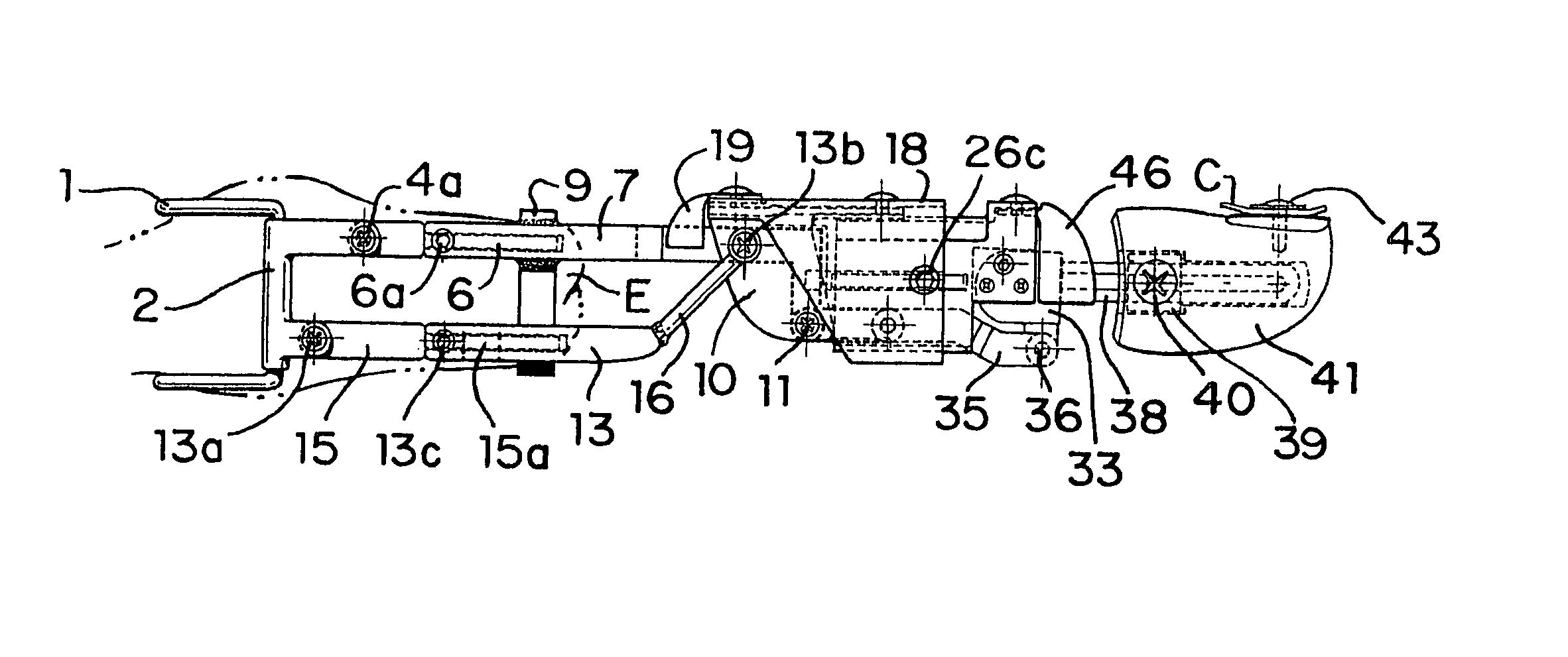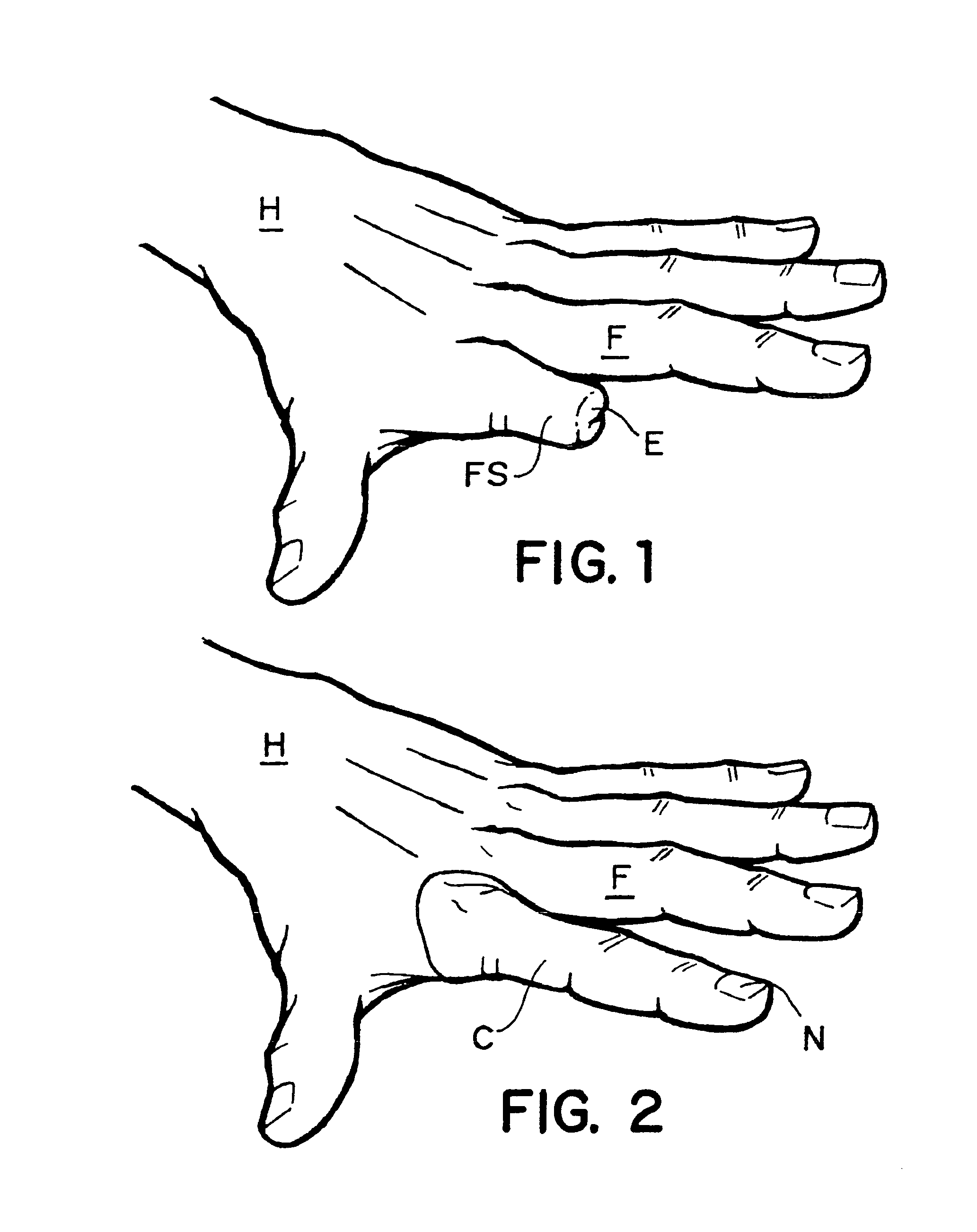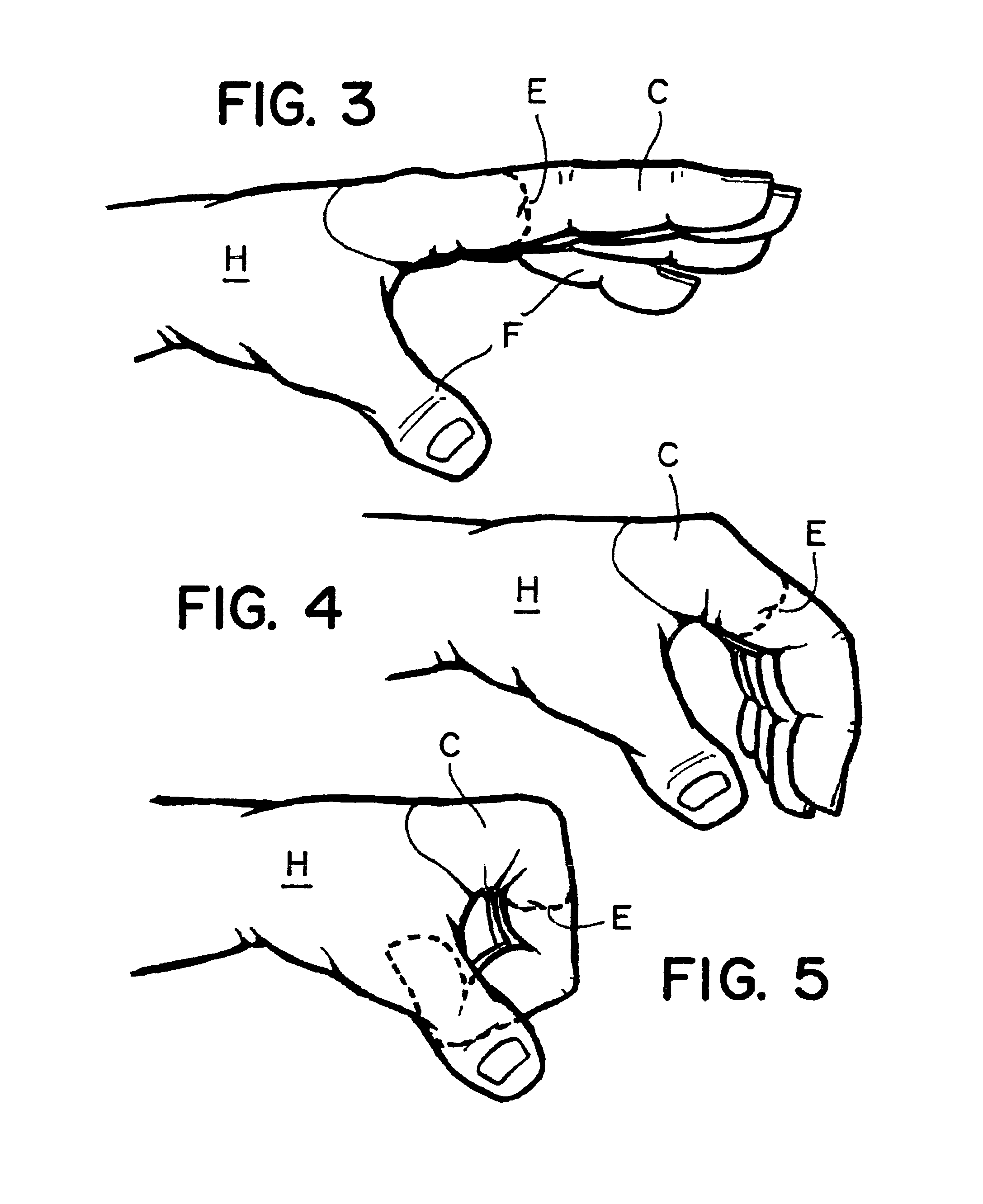Articulated artificial finger assembly
a finger and finger technology, applied in the field of artificial fingers, can solve the problems of size and cost, hindering many in need from obtaining expensive electronic prostheses, and creating self-contained electronic finger prostheses,
- Summary
- Abstract
- Description
- Claims
- Application Information
AI Technical Summary
Benefits of technology
Problems solved by technology
Method used
Image
Examples
second embodiment
[0024]FIGS. 9-11 shows the operation of the flexion and extension movements of the articulated artificial assembly as demonstrated. The device enables someone to control the motion of an articulated artificial finger with leverage gained from the movement of the remaining portion of an amputated finger or stub. When matrix 1 is in place with the stub inserted through matrix 1 and into ring 9 in a straight position, the articulated device is extended in a pointing position shown in FIG. 9. The matrix 1 remains in place while the stub has freedom to move vertically and horizontally. The articulation of the device can most easily be understood by studying the leverage gained from the forward portion of the upper actuating drive 7, which acts as a lever during articulation. When the finger is extended as in FIG. 9, the leverage gained from the upward pressure on the ring 9, holds the middle phalangeal and phalangeal tip in a straight position. FIG. 10 shows a slightly flexed position of...
embodiment 1
[0025]FIG. 12 illustrates the hand H whereon a finger has been completely amputated leaving the end of the knuckle EK only. Obviously the remaining stub of the finger in the embodiment 1 cannot be used to activate the movement of the artificial finger. Therefore the adjacent finger next to the missing finger is being used for this purpose. Consequently, in FIG. 13 there is a ring 59, which makes this connection shown in subsequent Figures. Also, FIG. 13 shows a supple cover 60 shown in previous figs. as C which is placed over the artificial finger after it is installed including a simulated fingernail 61.
[0026]FIG. 14 illustrates the connection between the normal finger and the mechanism that activates the artificial finger, which is adjacent to the normal finger. To this end the activating ring 59 on the adjacent finger has an extension wire or rod 62 which is fastened to ring 59 by way of welding or soldering and forms a right angle to be explained below. This second embodiment in...
PUM
 Login to View More
Login to View More Abstract
Description
Claims
Application Information
 Login to View More
Login to View More - R&D
- Intellectual Property
- Life Sciences
- Materials
- Tech Scout
- Unparalleled Data Quality
- Higher Quality Content
- 60% Fewer Hallucinations
Browse by: Latest US Patents, China's latest patents, Technical Efficacy Thesaurus, Application Domain, Technology Topic, Popular Technical Reports.
© 2025 PatSnap. All rights reserved.Legal|Privacy policy|Modern Slavery Act Transparency Statement|Sitemap|About US| Contact US: help@patsnap.com



